Single vs. Twin Engine RIBs: Pros and Cons

By Thomas P.—eRibbing.com
One or two outboard engines?
That’s an essential question that many people who have decided to buy a larger rigid-hulled inflatable boat (RIB) need to answer. And that answer may not be as easy as it may seem to arrive at.
This dilemma has become even tougher to solve in recent years thanks to the increased horsepower of outboard engines. Even a 29.53’ (9m) or 31.81’ (10m) RIB can run effectively with the installation of a single engine.
So, among the most important decisions we have to take when choosing a RIB of 26.25’ to 31.81’ (8 to 10 m) is whether we will equip it with single or twin outboard engines.
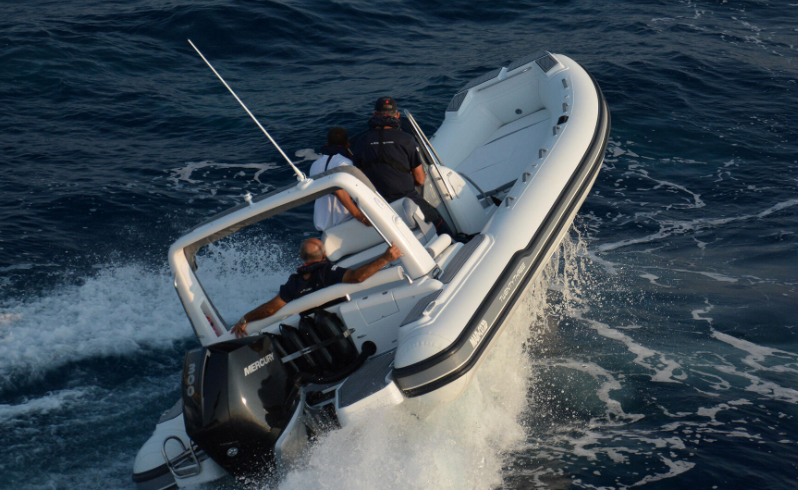
Power Trip
It should be clear that when we plan to equip our boat with two engines we must bear in mind that the sum horsepower must be at least 30% higher than the horsepower we would choose if we were to install a single engine.
Otherwise, if the total output of our twin-engine RIB is the same as the horsepower of the single, performance will most likely be poorer and the only thing we will achieve is to add more weight and expenses. Additionally, the “safety,” which is usually the main reason for buying a second engine, is defeated because our boat won’t be able to get on plane with only one engine if the power isn’t greater.
Considering that all other factors are equal, a twin-engine RIB with the same horsepower as a single-engine one will have a lower top speed, lower cruising speed and higher fuel consumption. It may have better performance at low rpm in terms of throttle response, acceleration and planing time.
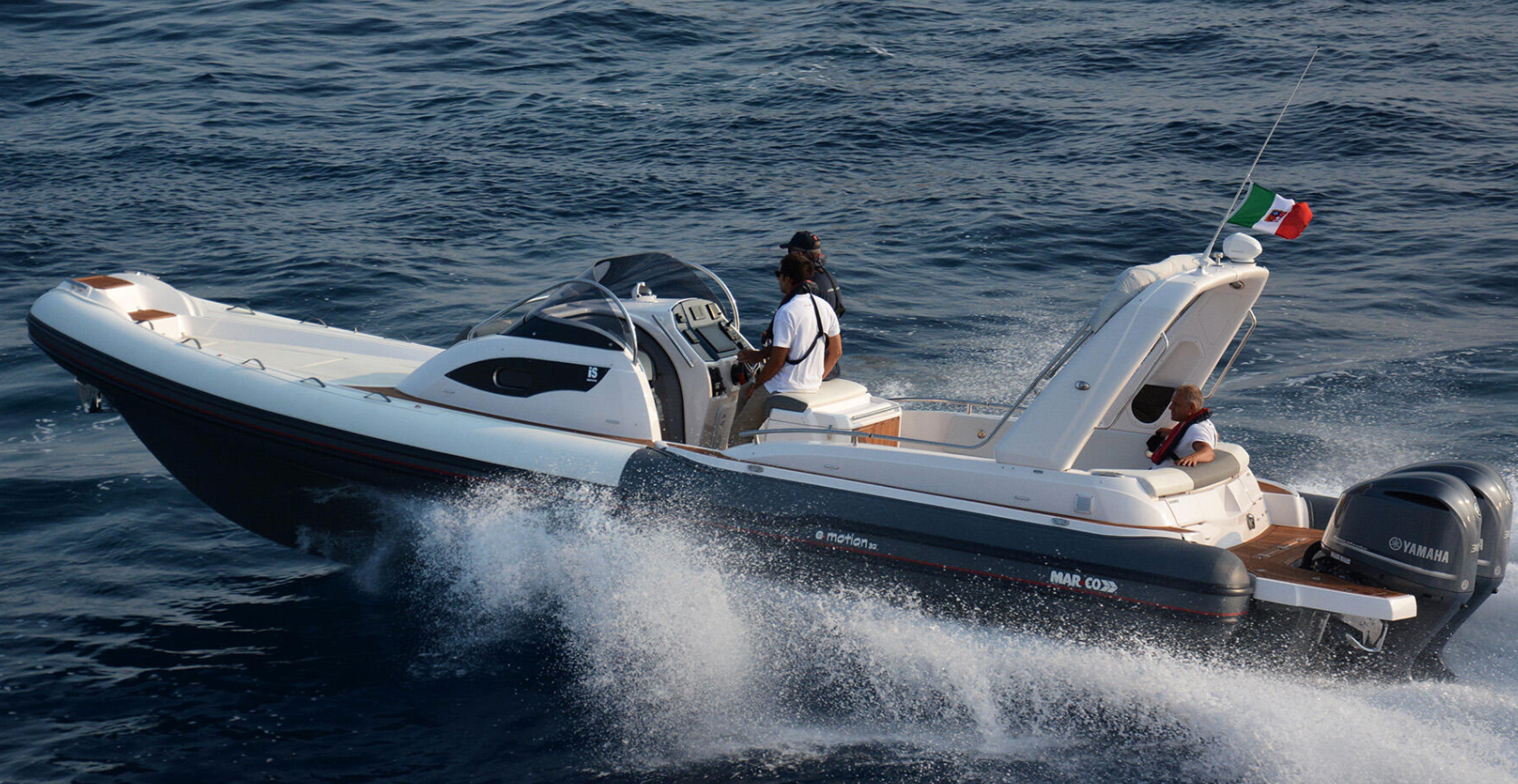
The above results are expected because at the same horsepower, the twin-engine setup has two gearboxes that create more hydrodynamic drag, additional weight and a disadvantageous power-to-weight ratio.
Advantages of Twin-Engine RIBs
For many people, safety is the main reason for choosing two engines. When one engine malfunctions or suddenly won’t start, we still have the other one that can safely return us to the harbor.
But does this really work?
The answer, unfortunately, is no. The argument of additional safety in twin-engine boats is weakened if we consider that the reliability of today’s engines is at much higher levels than in the past. A single-engine craft will rarely experience a mechanical problem that leaves us adrift. Additionally, most twin-engine boats can’t get on plane with one engine. Finally, 90% of the outboard engines’ problems are fuel related and since both engines are fed by the same tank, the bad fuel will take down both engines.
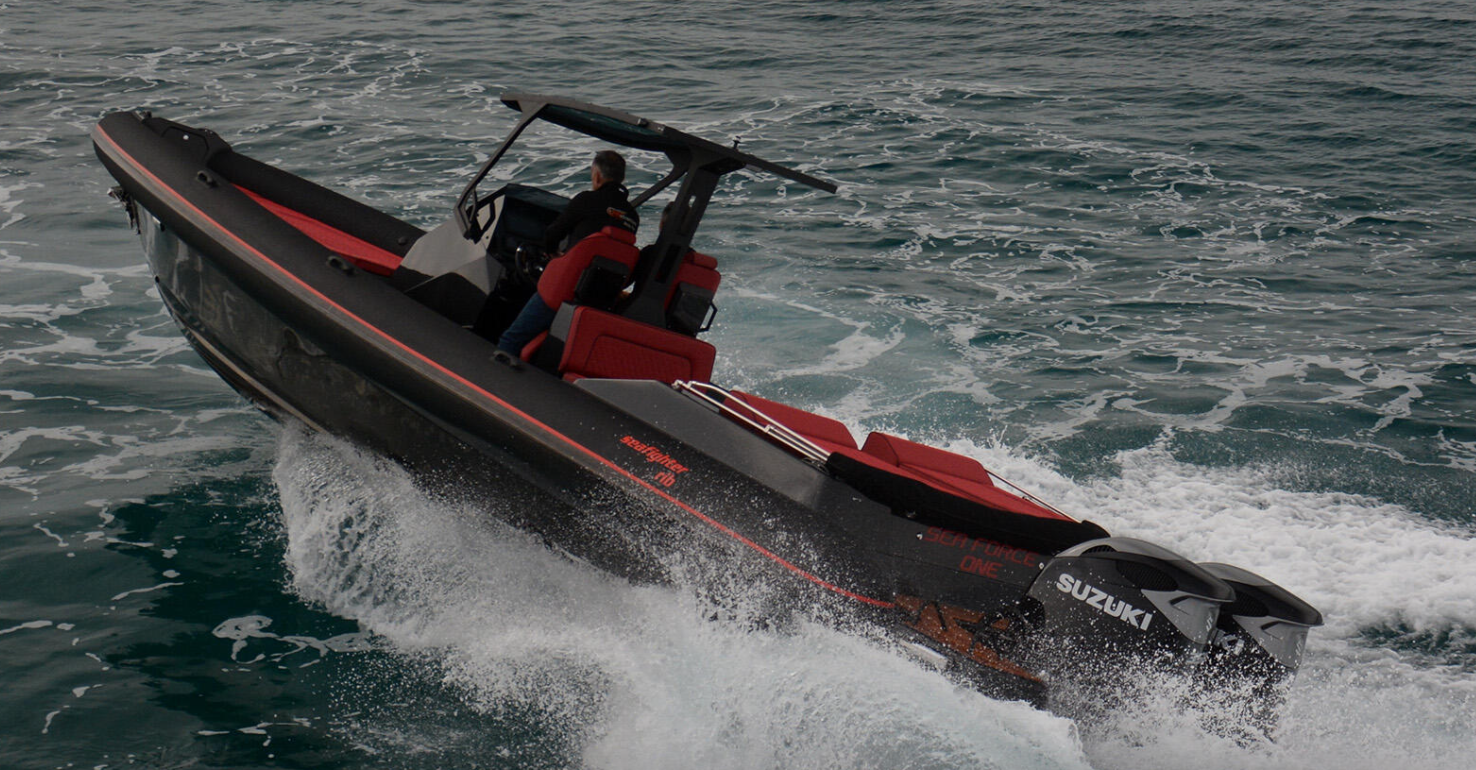
We must also remember that, according to the probability theory, in the case of having two engines the probability of damage to one of them is always greater than a single.
Nevertheless, twin-engine RIBs have a safety edge.
We can highlight this concept if we set up our boat in strict compliance with the following conditions:
- Each engine must have the appropriate horsepower so as to be able to get the boat on plane on its own.
- Avoid raising the engines to excessive transom heights.
- We must always have two larger diameter and shorter pitch spare propellers stored on the boat. This will get the boat on plane with one engine and allow her to be held on plane at the lowest possible rpm in an emergency situation so it can travel many miles without over-stressing the engine.

- Have two fuel tanks with separate lines and filters so one fuel supply system will 100% independent of the other. In the case of any impediment to the fuel supply, we will not risk losing both engines. Additionally, make sure that one of the two tanks is permanently filled with gasoline from a trusted source. In the case of bad fuel or the presence of water in the second tank, all we have to do is turn switches and feed the engines from the tank with the good fuel.
- If our vessel has only one large tank, it is prudent to equip it with a second smaller one. The size will depend on the distances the captain plans to typically cover. In this case, a permanent T in the fuel line with a selector valve must be installed just before the fuel-water separators. Then we can directly connect the spare tank in case of emergency.
If the above conditions are not met, we have the same degree of safety that we would have with a single-engine setup accompanied by a small auxiliary engine.
Performance
Another factor that leads many people to the choice of two engines is the desire for better performance. People assume the twin engines will offer better overall performance, which is not always the case.
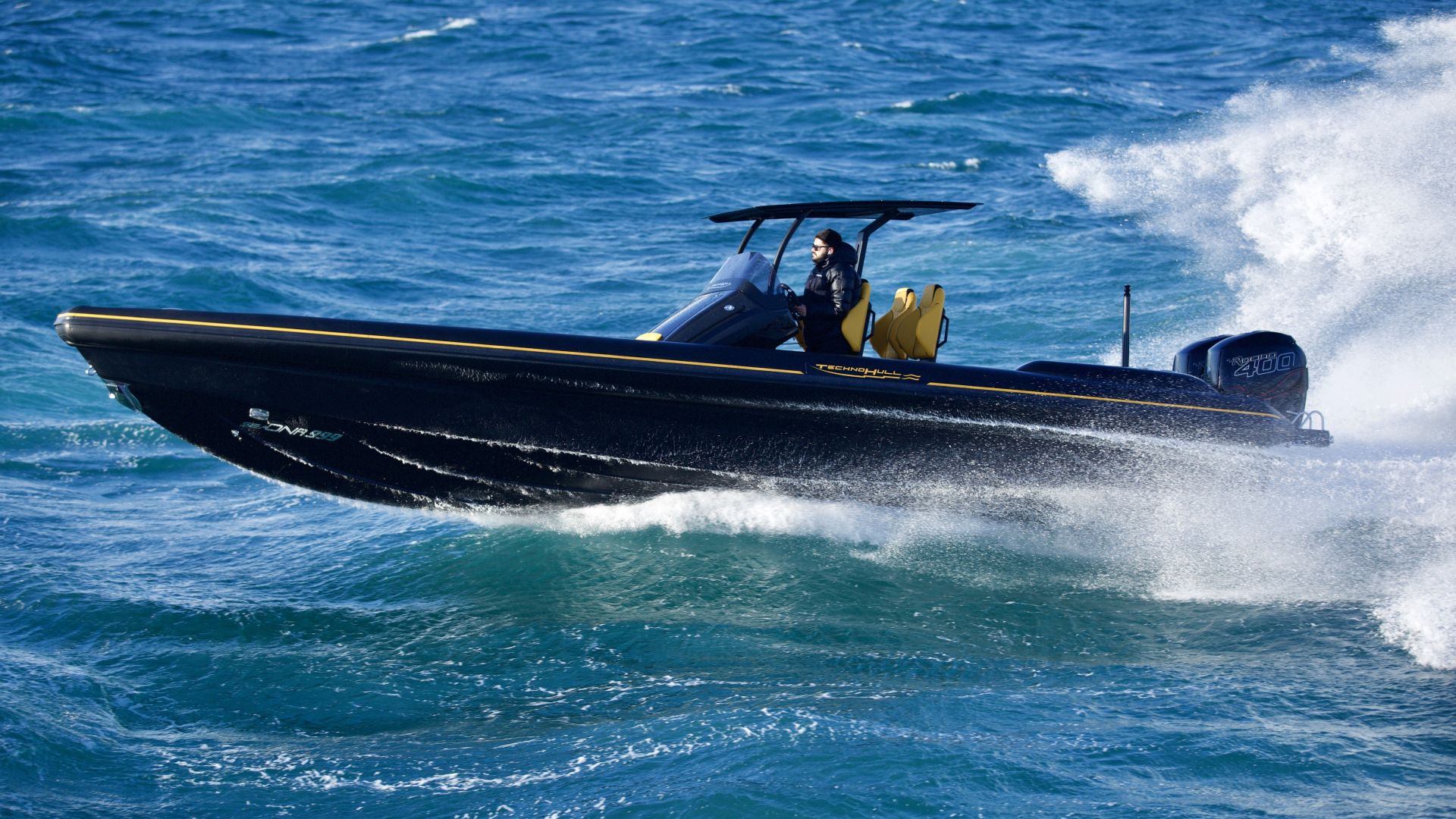
The term “performance” includes top speed, cruise speed, throttle response, acceleration, planing time, the ability to hold the boat on plane at low speeds and fuel consumption.
In a previous test, we compared the performance of a Technohull SeaDNA 999 with a single Mercury Verado 350 hp and another with twin 300-hp Verados. We recorded the following results:
- We achieved 56 knots at top speed with the twins versus 46 knots for the single engine.
- With the twins, we found best cruise at 31 knots and 3500 rpm burning 2.1 liters per nautical mile, while the single 350 hp was running 28 knots at 4500 rpm burning 2 liters per mile. The twin engines achieved higher cruising speed at lower rpm while the fuel consumption was almost the same.
- The twin engines pushed the boat to 30 knots in 10 seconds compared to 16 seconds with the single engine.
- The twin 300s held the RIB on plane at 2600 rpm, while the single 350-hp engine maintained plane at 3000 rpm.
Boat Handling
A twin-engine RIB has a clear advantage in low-speed maneuverability in limited places or crowded marinas. It’s capable of moving around its center without the frequent forward and reverse shifts with a single engine. This is an advantage that will be appreciated when dealing with strong wind or currents. Twins also have greater thrust in reverse.

On a twin-engine RIB, we also have the option of adding joystick control that lets us move our boat in any direction, even to pivot it 360 degrees in place, and makes docking easier.
Twin-engine setups provide more choices when navigating, offering much better control of the RIB. They offer greater stability at high speeds, while the steering torque is absent due to the inversely rotating propellers and thus the need for continuous corrections is minimized.
When we are traveling in windy conditions, we can improve our ride quality and, depending on the direction of the waves or the wind, we can control the boat’s listing by trimming in one engine while adding positive trim to the other one.
The improved throttle response at low speeds is mainly due to the blade-area advantage offered by the two propellers and the improved bite they provide. They let a boat climb more easily onto big waves and hold the RIB on plane at lower speeds, which means lower fuel consumption and more comfortable cruising.

When we are traveling in following seas, the ride usually is improved because of the added weight on the transom. It helps the bow stand higher in the water, minimizing thus the possibility of stuffing on the back of the next wave.
On the other hand, a single-engine RIB can perform more tight turns with a much smaller radius, elements that are also crucial when traveling in bad weather conditions.
After All, Which is best?
Should I choose single or twin engines for my RIB? The answer, as always, is: it depends. Let your needs lead be the deciding factor.
Carefully weigh out the purpose for which you buy the RIB and the area in which you will most likely navigate. If your goal is to ride in lakes, nearshore or to close destinations, a single-engine setup with a small auxiliary engine is the best choice.
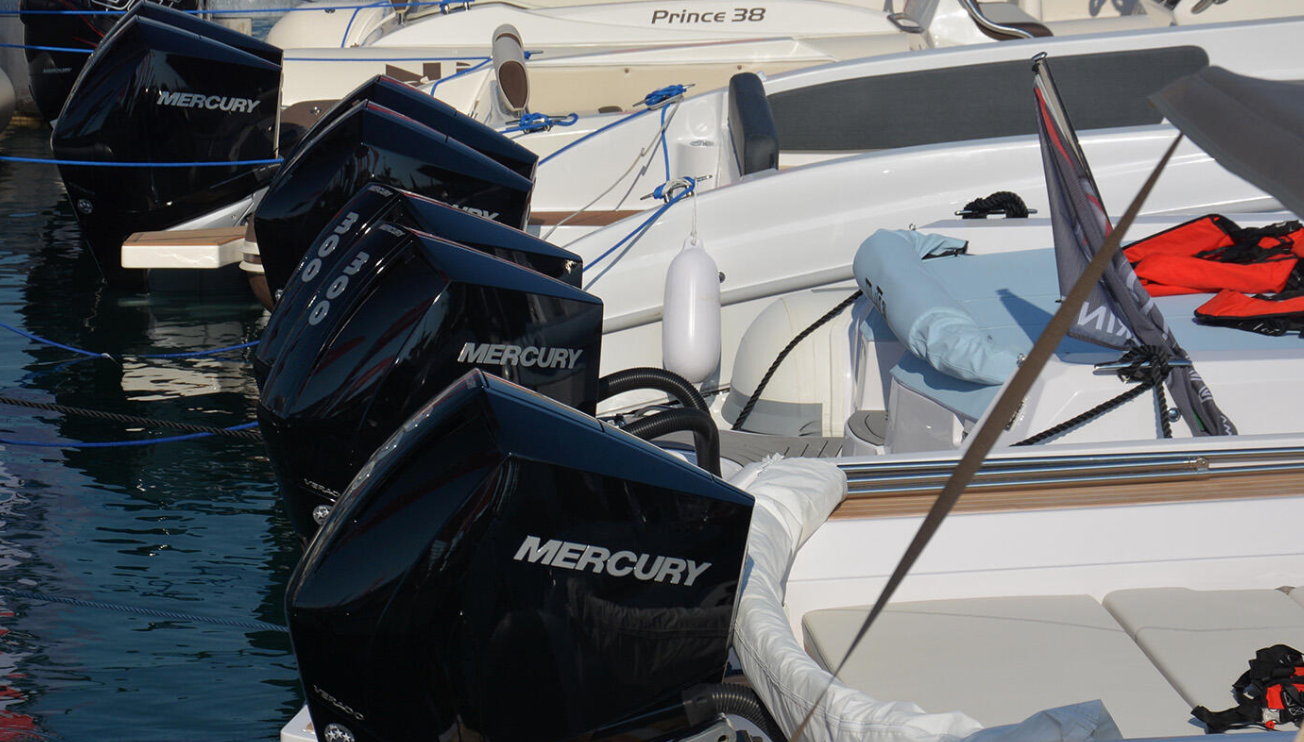
Conversely, if you enjoy high performance or if you plan to travel in the open sea by marking distant destinations on the map, the twin-engine setup is the way to go. In this case all you have to “weigh” is your budget
Twins seem to be the best choice in terms of safety, performance and boat handling. In addition to the purchase price of the second engine, take into account the extra equipment and working hours that a twin-engine RIB requires. This includes the battery, filters, spare propellers, electrical installations, fuel system and the time and expenses to set it up properly, i.e. props, engine mounting height and testing.
When the time for the annual maintenance comes, the extra engine could start to hurt “double,” too.